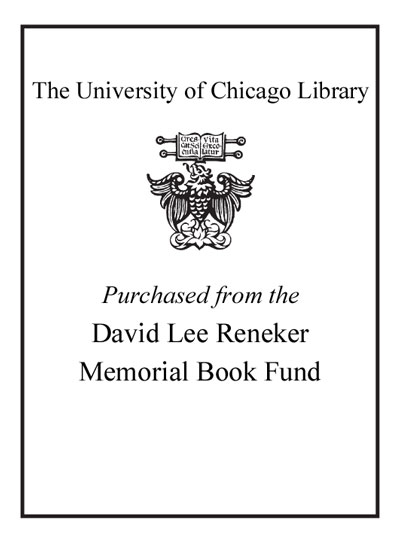IEG review of World Bank assistance for financial sector reform /
Saved in:
| Corporate author / creator: | World Bank. Independent Evaluation Group. |
|---|---|
| Imprint: | Washington, D.C. : World Bank, 2006. |
| Description: | xxiii, 139 p. : ill. ; 28 cm. |
| Language: | English |
| Subject: | |
| Format: | Print Book |
| URL for this record: | http://pi.lib.uchicago.edu/1001/cat/bib/6008905 |
Table of Contents:
- Acknowledgments
- Foreword
- Preface
- Executive Summary
- Acronyms and Abbreviations
- 1. Introduction
- Background
- Objectives of the Review
- Caveats on the Scope of Review
- Inputs
- Organization of the Review
- 2. What Constitutes Good Practice?
- Historical Perspective
- Literature Review
- Bank Guidelines and Strategies
- Past IEG Recommendations and Management Response
- Framework for Evaluation
- Part I. Assessing Bank Assistance
- 3. Trends in Lending and Nonlending
- Overview
- Bank Lending for Financial Sector Reforms
- Focus of Financial Sector Reforms
- Bank Nonlending Assistance for Financial Sector Reforms
- 4. Regional Patterns of Bank Assistance
- Europe and Central Asia (ECA) Region Was the Most Active
- Africa (AFR) and Latin America and the Caribbean (LAC) Regions Were Early Reformers
- East Asia and Pacific (EAP) Region Was Mostly Crisis Driven
- Middle East and North Africa (MNA) and South Asia (SAR) Regions Took Conservative Approaches
- 5. Quality-at-Entry of Bank Assistance
- Overview
- Quality-at-Entry in Lending
- Quality of Nonlending Services
- Consistency of Bank Approaches within Countries
- Coherence of Bank Approaches across Countries
- 6. Outcomes of Bank Loans and Credits
- Overview
- Financial Sector versus Multisector Loans
- Trends and Sequencing of Adjustment Loans
- 7. Bank Support to Crisis Countries
- Overview
- Did the Bank Anticipate the Crisis?
- Bank Response to Crises
- Objectives and Designing Loans
- Below-Average Achievement
- Collaboration with the IMF
- Effectiveness and Sustainability of the Bank's Crisis Unit
- Bank Leadership during Crisis
- Recommendations
- Part II. Analyzing Results at the Country Level
- 8. Country-Level Outputs: Ownership
- Overview
- Shift to Private Ownership
- Considerable Progress Has Been Made
- Privatization Far from Complete in Many Countries
- Quality Matters
- Better Outcomes with Prior Financial Restructuring
- Other Forms of Bank Restructuring
- Avoiding Buildup of NPLs
- Closure as an Alternative to Bank Privatization
- Privatization Took Longer Than Expected
- Unanticipated Problems
- Restructuring without Privatization Is Seldom Successful
- Recommendations on Restructuring and Privatizing Banks
- 9. Country-Level Outputs: Incentives
- Overview
- Changes in the Regulatory Regime Present a Mixed Picture
- Regulatory Framework in ECA Region Transition Countries
- Implementing Regulations and Better Banking Supervision
- Special Topic: Legal Immunity for Supervisors
- Special Topic: Deposit Insurance
- Recommendations on Improving the Incentive Framework
- 10. Country-Level Outcomes: Market Structure, Contestability, Efficiency, and Health
- Overview
- Changes in Market Structure: Bank Concentration
- Changes in Contestability
- Interest Rate Spread
- Health of the Financial System
- 11. Country-Level Impact: Financial Sector Depth and Stability
- Overview
- Financial Sector Depth: Positive Findings
- Systems Still Shallow in Many Countries
- Credit to the Private Sector
- Financial Sector Depth: Capital Markets
- Did Bank Borrowing Improve Stability?
- 12. Findings and Recommendations
- Findings
- Recommendations
- Appendixes
- A. Data on Trends in Lending and Nonlending
- B. Outcome Ratings of Bank Loans
- C. Country-Level Outputs
- D. Reference Tables
- E. Country-Level Outcomes
- F. Definitions and Sources for IEG/DEC Model
- G. Management Response
- H. Chairman's Summary, Committee on Development Effectiveness (CODE)
- Endnotes
- References
- Boxes
- 3.1. Identifying Bank Assistance for the Financial Sector
- 3.2. Financial Sector Assessment Program (FSAP)
- 4.1. Financial Sector Reforms in the ECA Region: Bank Strategy, Analysis, and Lending
- 4.2. Bank Assistance to China
- 4.3. Pakistan and Bangladesh: Commitments Explain Differences in Bank Lending
- 5.1. Highly Relevant Objectives for Financial Sector Reforms
- 5.2. Strong Consistency among Bank Products
- 6.1. What a Difference a (Near) Crisis (Sometimes) Makes
- 7.1. Objectives of Crisis Lending: Ambitious Reforms
- 7.2. Mixed Outcomes
- 7.3. Improved Coordination Needed between the World Bank and the IMF
- 8.1. Problems Comparing Results among Countries
- 8.2. Data on Bank Ownership Can Be Misleading
- 8.3. Quality of the Buyer Matters

